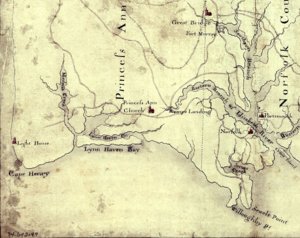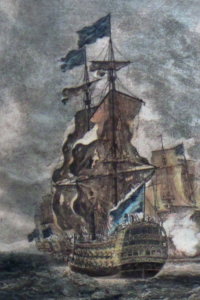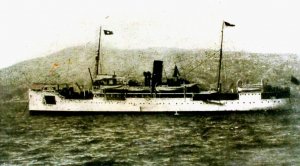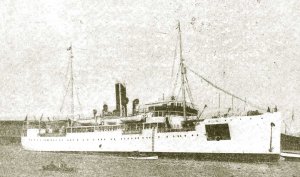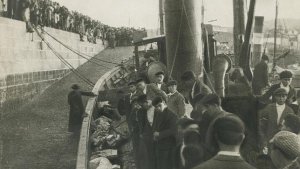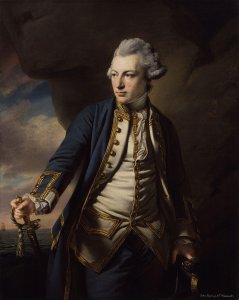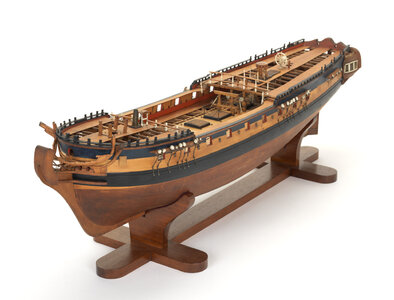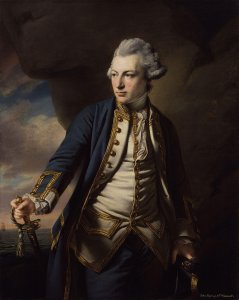Today in Naval History - Naval / Maritime Events in History
22nd of December
please use the following link and you will find the details and all events of this day ..... in the following you will find some of the events
1668 – Launch of HMS Nonsuch, a 36-gun fifth rate of the Royal Navy.
HMS Nonsuch was a 36-gun fifth rate of the Royal Navy. She was an experimental fast-sailing design, built by the renowned shipwright Anthony Deane according to proposals by the Dutch naval officer Laurens van Heemskirk, who became her first captain. She was launched in December 1668, and commissioned the same day under van Heemskirk. In 1669 she was reclassed as a 42-gun Fourth rate, being commanded from 9 April by Captain Sir John Holmes.

1743 – Launch of HMS Harwich, a 50-gun fourth rate ship of the line
HMS Harwich was a 50-gun fourth rate ship of the line of the Royal Navy, built to the dimensions laid down in the 1741 proposals of the 1719 Establishment at Harwich, and launched on 22 December 1743.

1799 - french privateer L'Espérance was captured in the Atlantic Ocean off Viana do Castelo, Portugal by the Royal Navy's HMS Netley (1798 - 16).
HMS Netley was launched in 1798 to an experimental design. During the French Revolutionary Wars she spent some years on the Oporto station, where she captured many small privateers. The French captured her in 1806, early in the Napoleonic Wars. They lengthened her and she became the 17-gun privateer Duquesne. In 1807 the British recaptured her and the Royal Navy returned her to service as the 12-gun gun-brig HMS Unique. She was expended in an unsuccessful fire ship attack at Guadeloupe in 1809.

1809 - HMS Salorman (1808 - 12), Lt. Duncan, lost in the Baltic.
HMS Salorman was the Danish cutter Søormen, of twelve guns, built in 1789, which the British captured in 1808. She was wrecked in 1809.

1810 - HMS Minotaur (74), Cptn. John Barrett, wrecked on the North Haaks, Texel.
HMS Minotaur was a 74-gun third-rate ship of the line of the Royal Navy, launched on 6 November 1793 at Woolwich. She was named after the mythological bull-headed monster of Crete. She fought in three major battles - Nile, Trafalgar, and Copenhagen (1807) - before she was wrecked, with heavy loss of life, in December 1810.

Scale: 1:48. Plan showing the body plan, sheer lines with modifications to the gun ports, and longitudinal half-breadth for 'Minotaur',

1841 - The Navy's first ocean-going side-wheel steam ship, the USS Mississippi, is commissioned at Philadelphia, Pa.
USS Mississippi, a paddle frigate, was the first ship of the United States Navy to bear that name. She was named for the Mississippi River. Her sister ship was Missouri. Her keel was laid down by the Philadelphia Navy Yard in 1839; built under the personal supervision of Commodore Matthew Perry. She was commissioned on 22 December 1841, with Captain W. D. Salter in command and launched several weeks later.

1864 - HMS Bombay line of battle screw steamship (84), Cptn. Colin Campbell, caught fire and exploded off Montevideo.
HMS Bombay was an 84-gun second rate ship of the line of the Royal Navy, launched on 17 February 1828 at Bombay Dockyard.

1904 – Launch of SS Milwaukee Clipper, also known as SS Clipper , and formerly as SS Juniata,
SS Milwaukee Clipper, also known as SS Clipper , and formerly as SS Juniata, is a retired passenger ship and automobile ferry that sailed under two configurations and traveled on all of the Great Lakes except Lake Ontario. Along with the SS Keewatin, Milwaukee Clipper is one of only two passenger steamships left on the Great Lakes. The vessel is now docked in Muskegon, Michigan.

1946 - ex-german battlecruiser USS Prinz Eugen (IX-300) capsized and sank
Prinz Eugen (German pronunciation: [ˈpʁɪnts ɔʏˈɡeːn]) was an Admiral Hipper-class heavy cruiser, the third of a class of five vessels. She served with Nazi Germany's Kriegsmarine during World War II. The ship was laid down in April 1936, launched in August 1938, and entered service after the outbreak of war, in August 1940. She was named after Prince Eugene of Savoy, an 18th-century Austrian general. She was armed with a main battery of eight 20.3 cm (8.0 in) guns and, although nominally under the 10,000-long-ton (10,000 t) limit set by the Anglo-German Naval Agreement, actually displaced over 16,000 long tons (16,000 t).


1963 – The cruise ship TSMS Lakonia burns 180 miles (290 km) north of Madeira, Portugal with the loss of 128 lives.
The TSMS Lakonia was a Greek-owned cruise ship which caught fire and sank north of Madeira on 22 December 1963, with the loss of 128 lives.
22nd of December
please use the following link and you will find the details and all events of this day ..... in the following you will find some of the events
Naval/Maritime History - 27th of August - Today in Naval History - Naval / Maritime Events in History
Today in Naval History - Naval / Maritime Events in History 21 December 1782 - Launch of HMS Ardent, a Royal Navy 64-gun third rate. HMS Ardent was a Royal Navy 64-gun third rate. This ship of the line was launched on 21 December 1782 at Bursledon...
shipsofscale.com
1668 – Launch of HMS Nonsuch, a 36-gun fifth rate of the Royal Navy.
HMS Nonsuch was a 36-gun fifth rate of the Royal Navy. She was an experimental fast-sailing design, built by the renowned shipwright Anthony Deane according to proposals by the Dutch naval officer Laurens van Heemskirk, who became her first captain. She was launched in December 1668, and commissioned the same day under van Heemskirk. In 1669 she was reclassed as a 42-gun Fourth rate, being commanded from 9 April by Captain Sir John Holmes.
1743 – Launch of HMS Harwich, a 50-gun fourth rate ship of the line
HMS Harwich was a 50-gun fourth rate ship of the line of the Royal Navy, built to the dimensions laid down in the 1741 proposals of the 1719 Establishment at Harwich, and launched on 22 December 1743.
1799 - french privateer L'Espérance was captured in the Atlantic Ocean off Viana do Castelo, Portugal by the Royal Navy's HMS Netley (1798 - 16).
HMS Netley was launched in 1798 to an experimental design. During the French Revolutionary Wars she spent some years on the Oporto station, where she captured many small privateers. The French captured her in 1806, early in the Napoleonic Wars. They lengthened her and she became the 17-gun privateer Duquesne. In 1807 the British recaptured her and the Royal Navy returned her to service as the 12-gun gun-brig HMS Unique. She was expended in an unsuccessful fire ship attack at Guadeloupe in 1809.
1809 - HMS Salorman (1808 - 12), Lt. Duncan, lost in the Baltic.
HMS Salorman was the Danish cutter Søormen, of twelve guns, built in 1789, which the British captured in 1808. She was wrecked in 1809.
1810 - HMS Minotaur (74), Cptn. John Barrett, wrecked on the North Haaks, Texel.
HMS Minotaur was a 74-gun third-rate ship of the line of the Royal Navy, launched on 6 November 1793 at Woolwich. She was named after the mythological bull-headed monster of Crete. She fought in three major battles - Nile, Trafalgar, and Copenhagen (1807) - before she was wrecked, with heavy loss of life, in December 1810.
Scale: 1:48. Plan showing the body plan, sheer lines with modifications to the gun ports, and longitudinal half-breadth for 'Minotaur',
1841 - The Navy's first ocean-going side-wheel steam ship, the USS Mississippi, is commissioned at Philadelphia, Pa.
USS Mississippi, a paddle frigate, was the first ship of the United States Navy to bear that name. She was named for the Mississippi River. Her sister ship was Missouri. Her keel was laid down by the Philadelphia Navy Yard in 1839; built under the personal supervision of Commodore Matthew Perry. She was commissioned on 22 December 1841, with Captain W. D. Salter in command and launched several weeks later.
1864 - HMS Bombay line of battle screw steamship (84), Cptn. Colin Campbell, caught fire and exploded off Montevideo.
HMS Bombay was an 84-gun second rate ship of the line of the Royal Navy, launched on 17 February 1828 at Bombay Dockyard.
1904 – Launch of SS Milwaukee Clipper, also known as SS Clipper , and formerly as SS Juniata,
SS Milwaukee Clipper, also known as SS Clipper , and formerly as SS Juniata, is a retired passenger ship and automobile ferry that sailed under two configurations and traveled on all of the Great Lakes except Lake Ontario. Along with the SS Keewatin, Milwaukee Clipper is one of only two passenger steamships left on the Great Lakes. The vessel is now docked in Muskegon, Michigan.
1946 - ex-german battlecruiser USS Prinz Eugen (IX-300) capsized and sank
Prinz Eugen (German pronunciation: [ˈpʁɪnts ɔʏˈɡeːn]) was an Admiral Hipper-class heavy cruiser, the third of a class of five vessels. She served with Nazi Germany's Kriegsmarine during World War II. The ship was laid down in April 1936, launched in August 1938, and entered service after the outbreak of war, in August 1940. She was named after Prince Eugene of Savoy, an 18th-century Austrian general. She was armed with a main battery of eight 20.3 cm (8.0 in) guns and, although nominally under the 10,000-long-ton (10,000 t) limit set by the Anglo-German Naval Agreement, actually displaced over 16,000 long tons (16,000 t).
1963 – The cruise ship TSMS Lakonia burns 180 miles (290 km) north of Madeira, Portugal with the loss of 128 lives.
The TSMS Lakonia was a Greek-owned cruise ship which caught fire and sank north of Madeira on 22 December 1963, with the loss of 128 lives.
Last edited:






